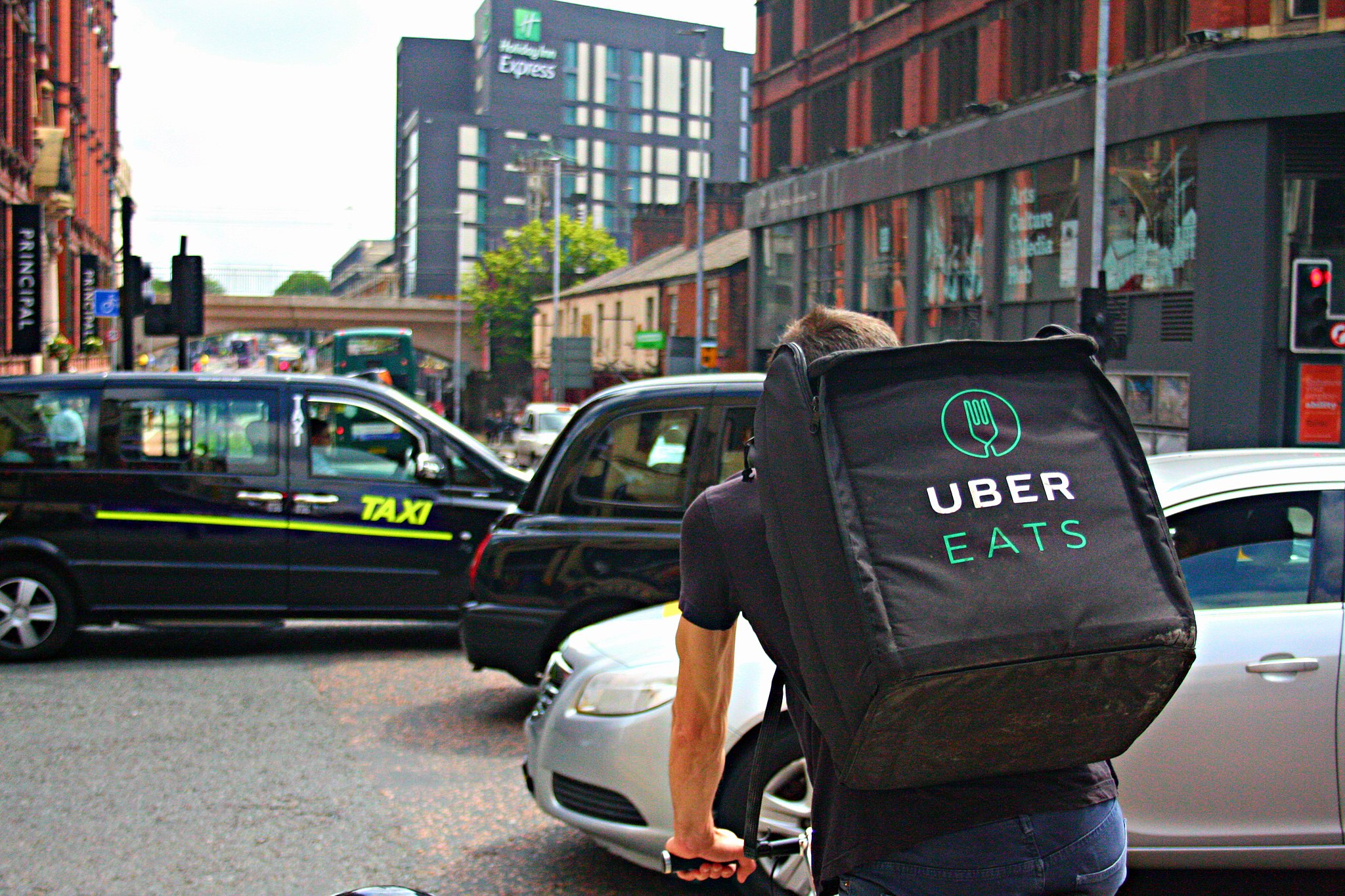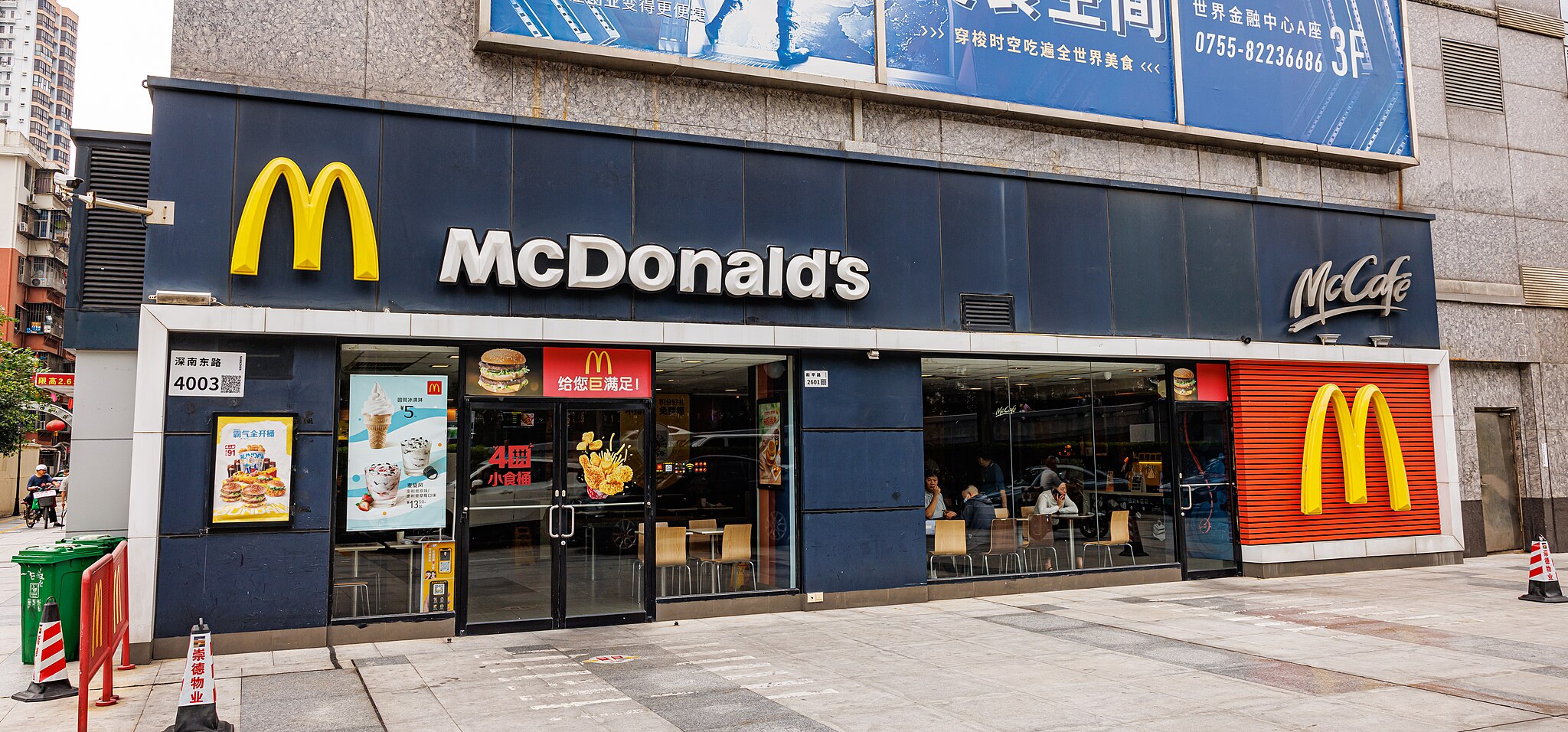Delivery Aggregators Unwrapped – 2021 Update
Posted by Stelios on 2nd Mar 2021 Reading Time:
The world is significantly transforming how people buy and consume food. Modern consumers are more likely to order fast food while sitting at home watching Bridgerton on Netflix than they are to cook.
 Image Source: Hank Hession, CC BY 2.0, via Wikimedia Commons
Image Source: Hank Hession, CC BY 2.0, via Wikimedia Commons
In this article, we take a deep dive into delivery aggregators. The online food delivery platform industry is fast-paced; our focus in this article is the platform-to-consumer segment.
There are a couple of types of delivery aggregators:
Restaurant-to-consumer delivery: This is what Domino's Pizza does.
Platform-to-consumer delivery: is what Uber Eats, Deliveroo & JustEat and similar on-demand food delivery businesses offer.
Consolidation phase? Well, sort of.
I have always thought that with the rapid pace of acquisitions, this industry may be slowing down, but I think this is a race to gobble up market share before another growth phase. Consumers are time-poor, and they are prioritising time more so than ever.
 Image Source: shopblocks, CC BY 2.0, via Wikimedia Commons
Image Source: shopblocks, CC BY 2.0, via Wikimedia Commons
The online food delivery market seems to be going through an exciting period, with several deals made by some of the most prominent players in the industry. Notable recent deals include JustEat and TakeTakeaway.com, Deliveroo purchase of Cultivate, Zomato buying Uber Eats India and DoorDash's acquisition of Caviar.
All deals are very different; all could have a bearing on each other in the long run.
Let’s focus on the merger of JustEat with Dutch rival Takeaway.com to create one of the world’s biggest online food delivery companies. JustEat has had to move away from a very profitable discovery model to a much less profitable discovery plus delivery model. Just Eat and Takeaway.com are active in 25 countries, and they will be looking to get into another 175 countries, so I think we’ll see more acquisitions and mergers over the coming months and years.
Amazon has recently invested $575m into Delivero, and although a minor investor, this is the beginning of Amazon getting more and more involved in the sector.
The delivery aggregator sector will grow, and the competition will be fierce, but fees will remain firm; I can see prices creeping up, as will the companies' power over the supply chain.
Layers & Layers
Just Eat has moved into delivery just like Uber Eats & Deliveroo. Then what are they all willing to do to stay relevant in this fast-moving world?
 Image Source: shopblocks, CC BY 2.0, via Wikimedia Commons
Image Source: shopblocks, CC BY 2.0, via Wikimedia Commons
The trend of the delivery aggregators is to take up more of the supply chain. The next move is still in its infancy, but the terms ghost kitchen, dark kitchen, virtual kitchen and cloud kitchen are all terms that describe a restaurant fulfilment point.
Travis Kalanick, co-founder and former CEO of Uber, has recently become the majority shareholder of CloudKitchens, the owner of FoodStars, which has dark kitchens all over the UK.
They aren’t; Deliveroo also has Deliveroo Editions, another up-and-coming restaurant fulfilment point (dark kitchen). It already has 16 in the UK, each typically comprising six- ten kitchens per site. It is worth noting that at the moment, these kitchens are being rented out by food producers, but for how long? Consider how Amazon now has several Amazon Basics items and many in-house brands as a case study.
These fulfilment points are growing fast, installing another layer between your customer and you.
Money, Money, Money.
I have broken down some of the costs of being a partner of the leading delivery aggregators in the UK:
Aggregator Fees
As far as we know, these figures are correct; you may have negotiated a better deal if you pay less. However, let us know if you don't think they are accurate.
| Delivery Aggregator | Sign Up Fees | Delivered by You Commission % | Delivered by Aggregator Commission % | Click & Collect Commission % | Admin Fees |
| JustEat | £699 +VAT | 14% | 30% | 14% | 50p per order |
| Deliveroo | n/a | n/a | 20-25% commission, with a cap at 35% | 12% | n/a |
| Uber Eats | n/a | n/a | 30% | 15% | n/a |
Example of Fees
I have not added operational costs like driver/rider wages, fuel, vehicle (hire & reward) insurance and vehicle maintenance. Bear in mind when doing your calculations.
| Delivery Aggregator | Net Sales | Food Costs | Fees | Profit £ | Profit % |
| Ordered via Just Eat (Click & Collect) | £1,000 | £400 | £140 + £25 | £435 | 43.5% |
| Ordered via Just Eat (Delivered by You) | £1,000 | £400 | £140 + £25 | £435 | 43.5% |
| Ordered via Just Eat (Delivered by Just Eat) | £1,000 | £400 | £300 + £25 | £275 | 27.5% |
| Deliveroo (Click & Collect) | £1,000 | £400 | £120 | £480 | 48% |
| Deliveroo (Delivered by Deliveroo) | £1,000 | £400 | £350 | £250 | 25% |
| Uber Eats (Click & Collect) | £1,000 | £400 | £150 | £450 | 45% |
| Uber Eats (Delivered by Uber Eats) | £1,000 | £400 | £300 | £300 | 30% |
Price Comparisons (Focus on Profit Per Item)
In this table, we have worked out roughly what you would need to charge to achieve the same cash margin per item. We have calculated food costs at 40% as a guide.
We found applying a 60% margin across the board very difficult because the prices were unrealistic.
| Sale Price £ - To Achieve £3 Cash Profit | Additional Markup % | Aggregator Fees % | |
| Fish & Chips (Takeaway) | £6.00 | nil | nil |
| Fish & Chips (Just Eat Click & Collect) | £7.21 | 20.1% | 14% |
| Fish & Chips (Just Eat Delivered by You) | £7.21 | 20.1% | 14% |
| Fish & Chips (Just Eat Delivered by Just Eat) | £9.37 | 56.1% | 30% |
| Fish & Chips (Deliveroo Click & Collect) | £7.01 | 16.8% | 12% |
| Fish & Chips (Delivered by Deliveroo) | £10.35 | 72.5% | 35% |
| Fish & Chips (Uber Eats Click & Collect) | £7.32 | 22% | 15% |
| Fish & Chips (Delivered by Uber Eats) | £9.37 | 56.1% | 30% |
Thoughts on delivery charge
When delivery aggregators deliver for you, you will be charged a percentage fee to have that food delivered, which the aggregator keeps -you don’t see a penny. The customer also pays a delivery charge – usually between £2-£3 and, with some platforms, a service fee.
When you deliver using your fleet, I’d suggest adding a delivery charge of £1.99; it’s a good middle ground, which will still be perceived as cheap. You’ll still pay VAT on that charge, and the aggregator will take their commission, but the rest is yours.
With the extra costs you incur working through a delivery aggregator, are you managing to get the right price from customers?
To make a delivery aggregator work for you, you have to put up your prices to cover the extra costs incurred so that you still make a profit – which is, after all, why you’re doing all this.
To give you an idea of what to charge, I’ve produced this handy little calculator that does all the work for you. You may decide this price point is too high and your customers will not pay it, on top of a delivery fee and service charge, but that’s where you have to weigh up the pros and cons of offering delivery versus not offering delivery and using an aggregator versus creating your own platform.
 Image Source: Chainwit., CC BY-SA 4.0, via Wikimedia Commons
Image Source: Chainwit., CC BY-SA 4.0, via Wikimedia Commons
One of the main reasons you should use a delivery aggregator is that they already have a well-established customer base. Pair that with a considerable dose of marketing and advertising to drive traffic and sales, which should mean many new potential customers.
However, being noticed on those aggregators can be challenging. In most cases, they will charge you a premium for your establishment to appear on the first page of a search. For example, JustEat will list promotional top placements in a clearly labelled sponsored slot at the top of search results in a particular postcode for up to 12 weeks.
You pay for a better position on the site, so can a local food takeaway keep up with a national/international chain that could pay indefinitely for a sponsored listing?
When looking at the aggregator costs above, remember that some of them hire and manage the fleet of drivers. This can be very useful because it saves on the cost, risk and logistical headaches of managing a fleet of delivery drivers.
You need to bear in mind that when food leaves your premises, it is out of your control and, therefore, you need to be confident that the aggregator can guarantee the quality, temperature and state of the food until it reaches the customer. If the food doesn’t have the right taste or temperature due to poor delivery conditions, customers will blame you, not the delivery service.
Delivery aggregators have been known to tie their customers into a long-term contract or even ask for exclusivity in return for better rates. Make sure you are aware of what you are agreeing to.
Cashflow is the lifeblood of any business. The proceeds from your orders through these platforms can take up to two weeks to reach your bank account, so be confident you can wait that long.
If you want to compete on the platform, you will have to squeeze your margins to remain competitive, but you will also have to keep up with commissions and wait to be paid.
Being Invisible
On a local level, customers in your area know what to expect from you. Naturally, you have formed a brand image, whether intentional or not. If you have always served the best of something presented in the best way possible, this all contributes to your brand image. You may have even ramped this up with a logo, branded packaging and a marketing budget. No matter how small or large, this helps form a brand identity.
A few thoughts on brand image:
- With the influx of brands on the market, more consumers buy based on the brand image rather than the product.
- Creating a positive brand image through marketing efforts is vital to a business’s prosperity.
- A brand incorporates the consumer’s complete experience, with both the product and the company and the mix of associations that develop due to these interactions.
- The most potent way for a company to increase its market share is to create an integrated strategy for marketing and branding and, in so doing, provide consumers with a unified and seamless way to interact with the brand.
One of the key ways you can deliver your brand image is by having great branded packaging. Consider how successful it has been for McDonald’s, KFC and Subway, to name a few.
 Image Source: Dinkun Chen, CC BY-SA 4.0, via Wikimedia Commons
Image Source: Dinkun Chen, CC BY-SA 4.0, via Wikimedia Commons
Delivery aggregators encourage you to use discounted packaging with their brand identity – great for maintaining profit margins. But let’s think about this for a minute. If you use JustEat packaging, customers see JustEat when the food is being delivered; they ordered from JustEat and paid JustEat. You can very quickly become a wholesale food operation on behalf of JustEat.
You still have all the overheads and costs; all the power lies with the delivery aggregator and the customer. Your business will be last in line because you are replaceable to the delivery aggregator. So, think carefully before you jump in.
Talking of customers, if this isn’t your platform, who owns the customer?
You, for sure, don’t. Because the power lies with the delivery aggregators, they do whatever it takes to keep the customer loyal. Many would argue that the aggregators are giving you customers all in one place and sharing that colossal marketing spend; it is not a complex argument to counter.
You must understand that the large marketing budget is for the benefit of the delivery aggregator rather than your business. With more and more companies joining because of the perceived value, making your business stand out on the platform will be harder and harder.
- You can’t stagger orders on these platforms; they want as many orders as possible for larger revenue.
- When a customer complains, they will nearly always take the customer's side and refund them without knowing your side of the story.
- If you get any bad reviews, they do not take the time to verify if they are true or not.
In this relationship, you are supplying the goods, the labour, the skill, and the local marketing for their brand; you are creating loyal customers for their platform. What happens if you want to split and leave the platform?
Offline, they will likely have already been calling your competitors, telling them of your success on the platform and that they are missing out on a small fortune. It won’t be hard to fill the gap with someone else willing to do this. They will use their algorithms to point customers to other outlets on their system online.
You should have as few layers as possible between you and your customers, even if you have to jump through hoops to get to them. It is worth remembering, for the most part, that when the delivery has gone well, the customer will think of JustEat, Uber Eats or Deliveroo. But, on the flip side, they will think of you when it goes wrong.
This is by design.
Thank you to Mark Drummond for helping with the calculations - Article updated on 02/03/2021

